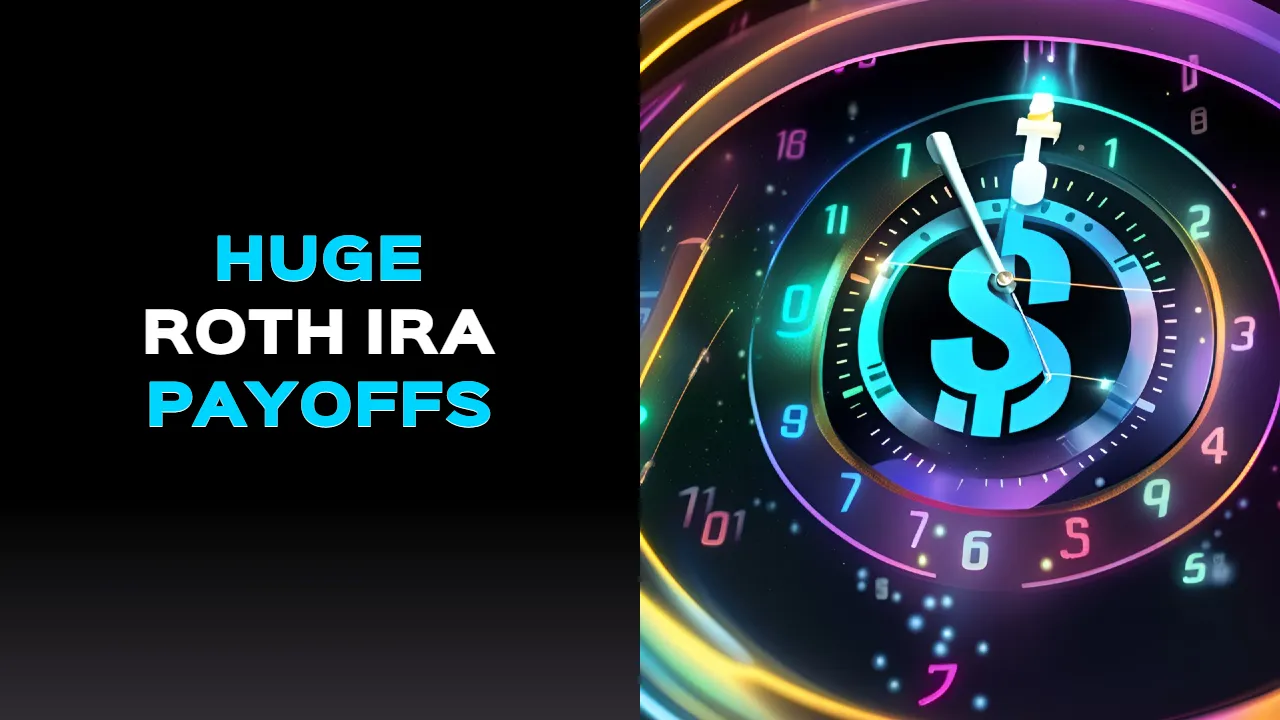Retirement Planning: Using Peer-To-Peer Lending for a Secure Future
You've probably heard the saying 'don't put all your eggs in one basket,' and when it comes to retirement planning, this age-old wisdom couldn't be more relevant.
What if there was a way to potentially boost your retirement savings while spreading out your risk? Peer-to-peer lending has been gaining attention as an alternative investment strategy, and for good reason.
As you consider the various options available for securing your financial future, it's essential to explore the role that peer-to-peer lending can play in your retirement planning.
This innovative approach offers the potential for attractive returns, but it's essential to understand the ins and outs before taking the plunge.
Understanding Peer-To-Peer Lending
https://www.youtube.com/watch?v=sOkCzZq1pro
If you're looking for an alternative investment opportunity, peer-to-peer lending may be worth considering as part of your retirement planning strategy. Peer-to-peer lending, also known as P2P lending, allows you to lend money to individuals or small businesses through online platforms. This investment opportunity provides a way to potentially earn higher returns compared to traditional investment options such as savings accounts or CDs.
When considering peer-to-peer lending for retirement planning, it's important to conduct a thorough risk assessment. While the potential returns can be attractive, there are risks involved, including the possibility of borrower defaults. However, many P2P lending platforms provide tools and risk assessment metrics that can help you make informed investment decisions.
In recent years, peer-to-peer lending has gained popularity as a way for individuals to diversify their retirement portfolios and potentially earn attractive returns. With the ability to choose which loans to fund, investors have a level of control over their investment strategy. Additionally, the relatively low correlation with the stock market makes peer-to-peer lending an appealing option for those seeking diversification in their retirement investments.
The Role of Peer-To-Peer Lending in Retirement Planning
When planning for retirement, integrating peer-to-peer lending into your investment strategy can offer the potential for higher returns compared to traditional options. Peer-to-peer lending can play a crucial role in securing your retirement income. Here's how it fits into your retirement planning:
- Diversification: Peer-to-peer lending allows you to diversify your retirement portfolio beyond stocks, bonds, and real estate. This diversification can help spread risk and potentially enhance overall returns.
- Income Generation: By investing in peer-to-peer lending, you can generate a steady stream of income in retirement. The monthly interest and principal payments from your peer-to-peer loans can supplement your retirement income.
- Control and Flexibility: Unlike some traditional investment options, peer-to-peer lending provides you with more control over your investment choices. You can select borrowers based on risk appetite and access your funds as loans are repaid, offering flexibility in managing your retirement funds.
Incorporating peer-to-peer lending into your retirement planning can provide an avenue for potentially higher returns, diversification, steady income, and flexibility, contributing to a more secure financial future.
Benefits of Using Peer-To-Peer Lending for Retirement
As you explore the role of peer-to-peer lending in retirement planning, it becomes evident that the benefits of incorporating this investment strategy go beyond traditional options, offering potential for higher returns and added diversification to your portfolio.
One of the key advantages of peer-to-peer lending for retirement is the potential for flexible income. Unlike traditional investments, peer-to-peer lending allows you to receive regular interest payments, providing a steady income stream during retirement. This flexibility can be particularly appealing for those seeking to supplement other sources of retirement income or maintain a comfortable standard of living.
Additionally, peer-to-peer lending is known for its low fees compared to many other investment options. With fewer overhead costs and no intermediary institutions, the fees associated with peer-to-peer lending are often significantly lower, allowing you to keep more of your returns. This aspect is crucial for retirement planning, as minimizing fees can have a substantial impact on the overall growth of your retirement portfolio.
Incorporating peer-to-peer lending into your retirement strategy can offer the potential for higher returns, diversified income sources, and cost-effective investment opportunities, contributing to a more secure and fulfilling retirement.
Risks Involved in Peer-To-Peer Lending
While peer-to-peer lending can offer attractive benefits, it's important to be aware of the potential risks involved in this investment strategy. Here are some key risks to consider:
- Default Risk: When borrowers fail to repay their loans, you as the lender face the risk of financial loss. Default rates can vary, and it's crucial to assess the creditworthiness of potential borrowers before investing. Platforms often provide credit scores and historical payment data to help you evaluate this risk.
- Loan Diversification: Failing to diversify your loans across different risk profiles and borrower types can expose you to higher levels of risk. Spreading your investment across multiple loans can help mitigate the impact of any single loan defaulting. It's important to carefully consider the distribution of your investments to minimize the impact of defaults.
- Regulatory Changes: The peer-to-peer lending industry is subject to regulatory changes that can impact the investment landscape. Stay informed about any changes in regulations that may affect your investments and adapt your strategy accordingly.
Understanding these risks and taking proactive steps to mitigate them can help you make informed decisions and navigate the peer-to-peer lending landscape effectively.
Diversifying Your Retirement Portfolio With Peer-To-Peer Lending
Looking to diversify your retirement portfolio with peer-to-peer lending? Adding peer-to-peer lending to your retirement strategy can bring valuable investment diversity, potentially enhancing your retirement security. By including peer-to-peer lending, you're not only spreading your investments across different asset classes, but you're also tapping into an alternative source of retirement income.
Diversification is crucial for a secure retirement, and peer-to-peer lending offers a unique opportunity to achieve this. With traditional investments like stocks and bonds, your portfolio's performance is closely tied to the stock market. However, peer-to-peer lending operates independently of the stock market, providing an additional layer of diversification to your retirement savings.
Furthermore, peer-to-peer lending can offer attractive returns, potentially boosting your retirement income. According to industry data, peer-to-peer lending has historically provided solid returns, often outperforming more traditional investment options. This can be particularly appealing for individuals seeking to maximize their retirement income while maintaining a diversified portfolio.
Incorporating peer-to-peer lending into your retirement portfolio can contribute to a more robust financial future, offering both investment diversity and potential for increased retirement security.
Frequently Asked Questions
How Does Peer-To-Peer Lending Compare to Traditional Retirement Investment Options Like Stocks and Bonds?
When comparing peer-to-peer lending to traditional options like stocks and bonds for retirement, it offers a diversified investment opportunity, potentially higher returns, and the ability to generate stable retirement income, even during market downturns.
Are There Any Tax Implications or Considerations to Be Aware of When Using Peer-To-Peer Lending for Retirement Planning?
When using peer-to-peer lending for retirement funds, be mindful of tax implications. Considerations are crucial for investment options. Did you know that 82% of P2P loans are for debt consolidation? Keep this in mind as you plan.
What Kind of Oversight or Regulation Is in Place for Peer-To-Peer Lending Platforms, and How Does This Affect the Security of My Retirement Funds?
Regulatory oversight of peer-to-peer lending platforms ensures retirement security by managing risks. Comparing investments, considering tax implications, and assessing reliability are crucial. Economic climate impacts and market downturns affect retirement planning stability. Stay informed for a secure future.
Can I Use Peer-To-Peer Lending as a Way to Generate Income During Retirement, Rather Than Just as a Long-Term Investment?
Thinking about generating income from peer-to-peer lending during retirement? It's like walking a tightrope. Diversify to spread risk, assess potential losses, and remember, no investment guarantees absolute security.
How Does the Current Economic Climate or Potential Market Downturns Affect the Stability and Reliability of Peer-To-Peer Lending as a Retirement Planning Option?
In the current economic climate, market risks can impact the stability of peer-to-peer lending for retirement security. Economic downturns may affect reliability, so it's crucial to assess these factors when considering this option.






